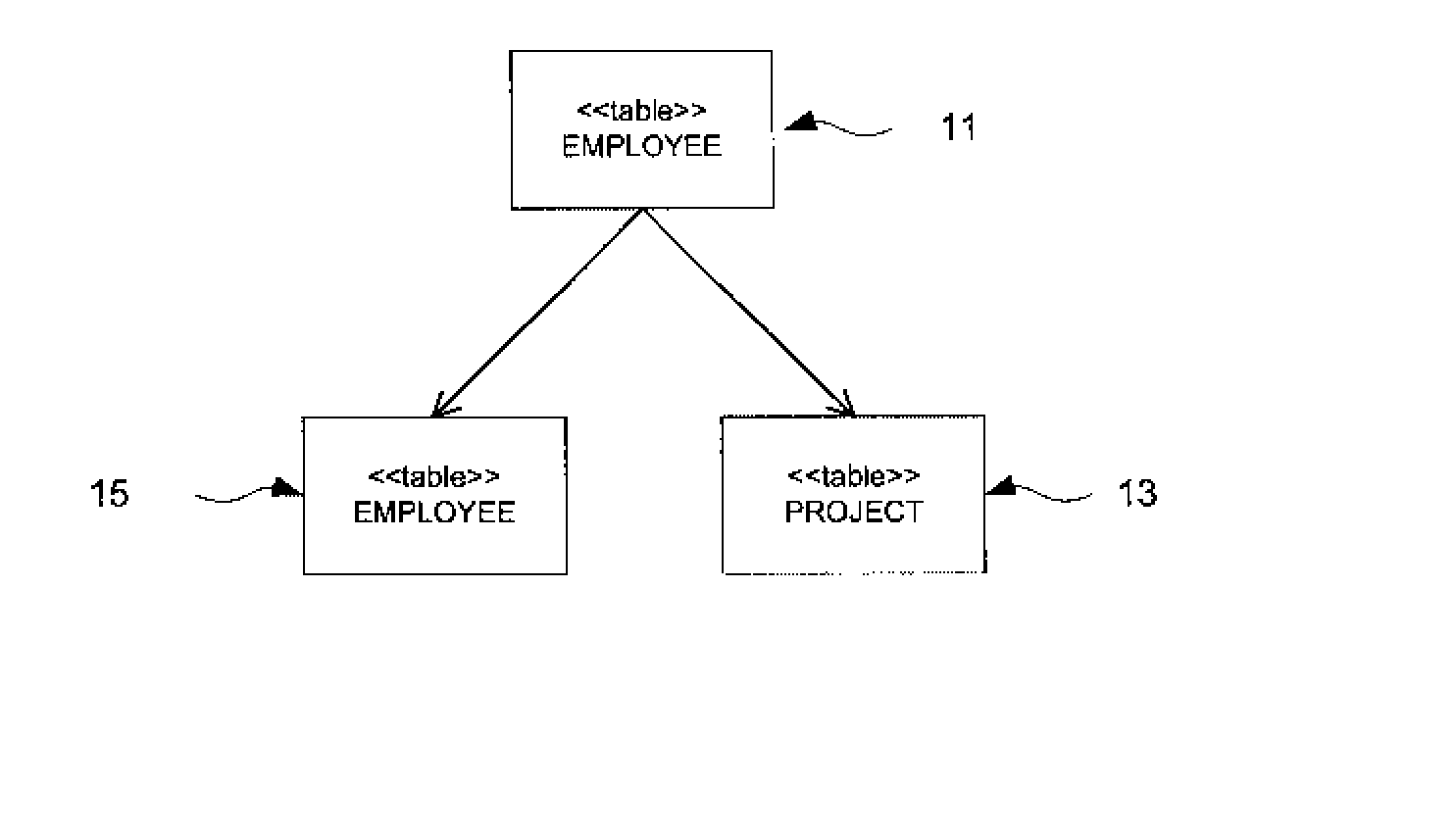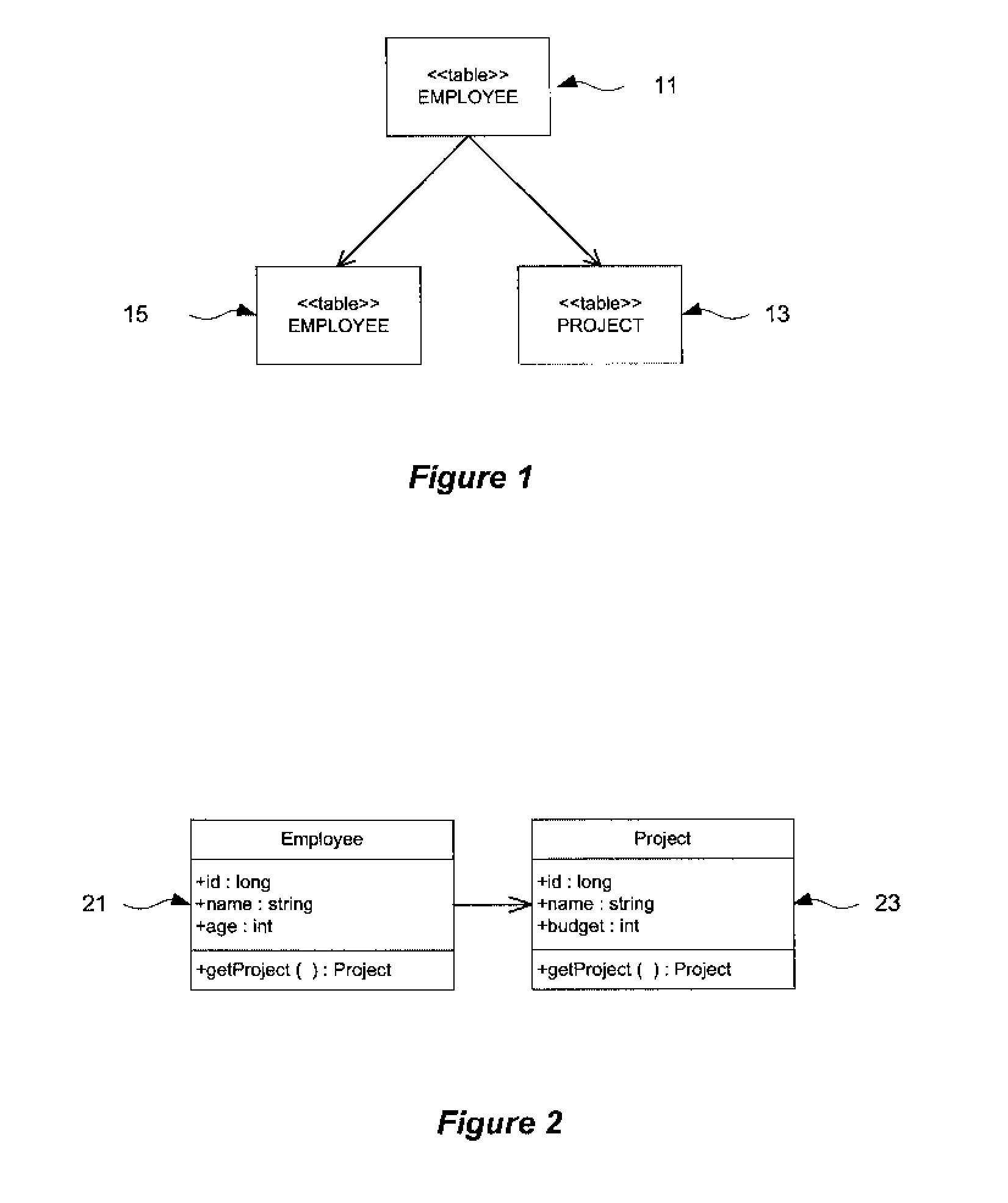Database query processing method and system
a database query and processing method technology, applied in the field of relational database query techniques, can solve the problems of increasing the amount of code that executes fetching data from database queries, affecting the ability to create and manage complex queries, and affecting the reuse rate of cod
- Summary
- Abstract
- Description
- Claims
- Application Information
AI Technical Summary
Problems solved by technology
Method used
Image
Examples
Embodiment Construction
[0011] There is provided a distributed fetching algorithm to fetch results of database queries using “table paths”. A set of “intelligent” fetch functions is defined, one for each object in the application, in such a way that each function is able to locate the right occurrence of the database table from which it must fetch the data, then fetch the related columns and next recursively invoke the appropriate “fetch” function for every associated object. This way, the logic that implements fetching of data from the appropriate tables and creates the structures that result from execution of the query is not query-dependent, and can be reused for every SQL query in the application.
[0012] Generic functions are instructed to locate the query-specific names used to alias database tables in specific SQL queries. This is accomplished by defining, together with each SQL query, a “table path” for every table instance involved in the query, together with a mapping to the alias used for that in...
PUM
 Login to View More
Login to View More Abstract
Description
Claims
Application Information
 Login to View More
Login to View More - R&D
- Intellectual Property
- Life Sciences
- Materials
- Tech Scout
- Unparalleled Data Quality
- Higher Quality Content
- 60% Fewer Hallucinations
Browse by: Latest US Patents, China's latest patents, Technical Efficacy Thesaurus, Application Domain, Technology Topic, Popular Technical Reports.
© 2025 PatSnap. All rights reserved.Legal|Privacy policy|Modern Slavery Act Transparency Statement|Sitemap|About US| Contact US: help@patsnap.com


